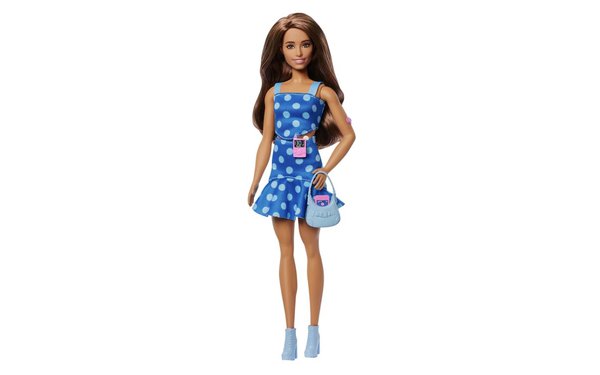
Mattel is honoring model Lila Moss and
Peloton instructor Robin Arzón with a Barbie doll with Type 1 diabetes.
“The doll, part of Barbie's Fashionistas line, comes complete with a continuous
glucose monitor, insulin pump and other features to represent those diagnosed with the chronic disease,” according to USA Today.
The brand partnered with Breakthrough
T1D, formerly JDRF, a diabetes research organization, to create the doll, which was officially unveiled at the Breakthrough T1D 2025 Children’s Congress, an advocacy event that brought 170 youth
delegates living with T1D face-to-face with lawmakers to fight for policy change and increased research funding.
advertisement
advertisement
“It’s a historic moment, not just for Barbie but for the
millions of people around the world living with type 1 diabetes,” notes Forbes. “For the first time in her
65-year history, Barbie will represent this chronic autoimmune condition in a way that’s both medically accurate and deeply personal. Her debut is about visibility—but more than that,
it’s about validation, empowerment, and changing the way children with the condition see themselves and are seen by others.”
Real diabetic women played an instrumental
role in the project, including Breakthrough T1D’s director of marketing strategy, Emily Mazreku, who has lived with type 1 diabetes since childhood.
“According to
Mattel, Barbie's continuous glucose monitor, or CGM, is held in place with heart-shaped medical tape in a ‘Barbie pink’ hue that's paired with a toy phone that displays a CGM app, which
helps Barbie track her blood sugar levels throughout the day,” according to ABC
News. “The doll's outfit is a matching blue polka-dot top and skirt set with a circle print representing the symbol for diabetes awareness. Barbie also carries a pastel blue purse where she
can stash any snacks or Type 1 diabetes supplies she might need.”
Mattel said in a release that it is donating dolls to the Breakthrough T1D 2025 Children's Congress.
“In Greta Gerwig’s 'Barbie' movie, Barbieland is a haven of equality and diversity,” according to The Guardian. “But although the dolls have been around since 1959,
it was only in 2019 that the manufacturer, Mattel, started selling Barbies with physical disabilities. They include a blind Barbie, a black Barbie with Down’s syndrome, dolls with hearing aids,
prosthetic limbs and wheelchairs, and a Barbie with vitiligo.”
There are more than 175 different Barbie looks in the fashionistas range, with various skin tones, eye colors,
hair colors and textures, body types and disabilities.
“Representation matters -- especially in childhood,” Arjun Panesar, founding chief executive of diabetes.co.uk,
tells The Guardian. “Seeing a Barbie doll with type 1 diabetes helps normalize the condition, reduce stigma and show children that they are not alone. It’s a positive step forward
in building confidence, inclusion and understanding around living with diabetes.”